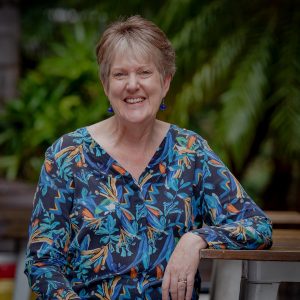
By Guardian Penny Wright
‘Putting children first’ is the theme of this year’s Child Protection Week. It is an important principle – but one that can be challenging to achieve. In many ways this is the very reason the Office of the Guardian was established in 2005, after the Layton Review of the Child Protection System. The review found that children in care were the most vulnerable in South Australia and recommended the Guardian role, to articulate and safeguard their rights. It was a means of putting them first within a large and complex system.
There are now more than 4,000 children and young people living away from their birth families in the child protection system in South Australia. Every day my staff and I witness how difficult it is for those managing these demands to put individual children first, ahead of acute system pressures, however good their intentions. The role for my office has never been more crucial – to stand beside each child or young person who needs our support, one among many, and insist that their individual needs and best interests are respected and met.
Some of the most vulnerable of these children are living in residential care. Prior experiences and their lives within the care system will often mean they have experienced significant trauma, with long lasting effects on their emotional wellbeing and sometimes their behaviour. Responding compassionately and effectively to their needs and behaviours has long been a challenge for the systems in which they find themselves. Too often, in the absence of more effective interventions and therapeutic options, the child protection system responds by invoking another system – the justice system – leading to the police, courts and detention. There are very few effective interventions or therapeutic services in that system either.
In 2016, the Royal Commissioner Margaret Nyland recommended that children who were considered to be at risk of harm – to themselves and others – should be sent to a secure therapeutic care facility where they would be detained while undergoing treatment for their behaviours.
Forcibly detaining children and young people for treatment or therapeutic care, although they have not committed an offence, might seem an attractive way to deal with their complex behaviours, especially if they habitually leave the place they are living and end up in trouble or are at risk.
But recently, consistent with previous advice from the (then) Guardian, in 2008, my team and I have advised the government against taking up this recommendation. Providing therapies and support for trauma is essential but detention is a drastic step, especially as research indicates that those affected usually have a history of high levels of mental health and social needs that have not been met.
Evidence of the effectiveness of secure therapeutic care is modest and depends on the quality of therapeutic input, the skill levels of carers and effective follow-up support services. In fact, these are the same factors that lead to the best outcomes for children and young people in care, generally – both residential and family-based.
There is already a widely acknowledged lack of sufficient support and therapeutic services for children and young people who need them, especially in residential care. There is a strong risk that secure therapeutic care would just mask this shortage and see children with troubled behaviours, often arising from their care environment, placed in a locked facility to manage a problem for the system. Instead, my office advised that all residential care should have a properly resourced therapeutic approach and that improved intensive therapeutic services should be available for all those children who need them.
Thankfully, the state government recently rejected the Nyland recommendation, a decision I support. In place of the secure care model, the government has committed to roll out a new program called the “Sanctuary Model” to provide therapeutic care across all residential care facilities. This includes providing Department for Child Protection staff at least two days of training, with a select group receiving more extensive training and development to support their colleagues. Training will also incorporate how to respond to the specific needs of Aboriginal children.
What comes next, including how successful this model will be and how the model will be evaluated, will depend on many factors, including its ongoing implementation and proper resourcing.
Twelve years since the Guardian’s first advice about this issue, a more therapeutic approach is long overdue. My team and I will wait with anticipation and hope that this new model will put children first and provide long lasting benefits for the safety and wellbeing of those who live in residential care.
